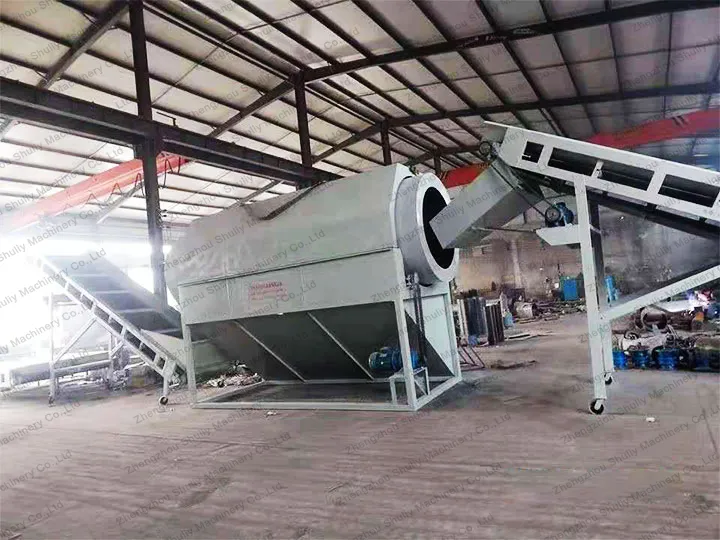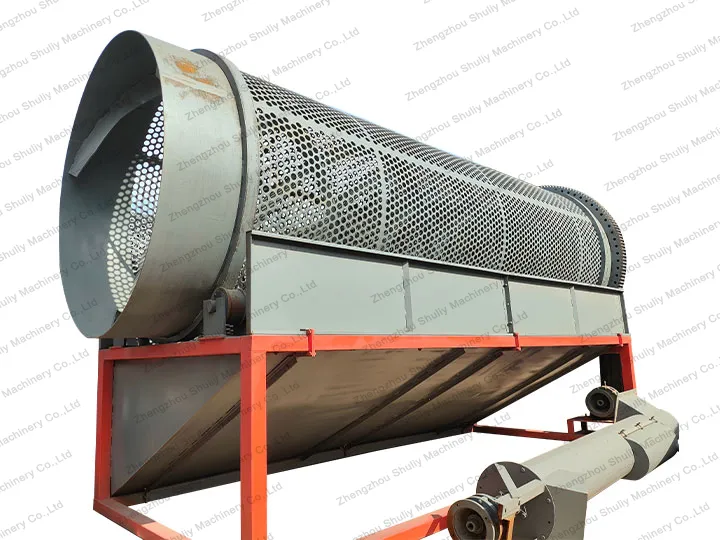टंबलर स्क्रीन, कचरा प्लास्टिक की बोतल रीसाइक्लिंग और कचरा प्लास्टिक उद्योग में एक महत्वपूर्ण पूर्व-उपचार उपकरण है। यह कचरा उपचार की दक्षता और गुणवत्ता में प्रभावी रूप से सुधार कर सकता है और पुनर्नवीनीकरण प्लास्टिक की गुणवत्ता पर अशुद्धियों के प्रभाव को कम कर सकता है।
ट्रोममेल स्क्रीन का परिचय
टम्बलर स्क्रीन एक प्रकार का कुशल स्क्रीनिंग उपकरण है, जिसका व्यापक रूप से खनन, निर्माण सामग्री, अपशिष्ट निपटान और अन्य उद्योगों में उपयोग किया जाता है। इसकी अनूठी सिलेंड्रिकल ड्रम संरचना, घूर्णन गति के माध्यम से, सामग्री वर्गीकरण स्क्रीनिंग प्राप्त करने के लिए, विभिन्न आकार के कणों को प्रभावी ढंग से अलग कर सकती है, जो गीले, चिपचिपे या असमान आकार की सामग्रियों को संसाधित करने के लिए उपयुक्त है।
एक ट्रॉमेल स्क्रीन कचरा प्लास्टिक रीसाइक्लिंग सुविधाओं में बड़े-क्षमता वाले प्रसंस्करण की जरूरतों के लिए आमतौर पर इस्तेमाल किया जाने वाला एक प्रकार का पृथक्करण उपकरण है। आम तौर पर, उत्पादन क्षमता वाले प्लास्टिक रीसाइक्लिंग लाइनें 1 टन/घंटा या उससे अधिक की उत्पादन क्षमता के साथ उत्पादन दक्षता में सुधार के लिए एक टंबलर स्क्रीन से लैस होती हैं।
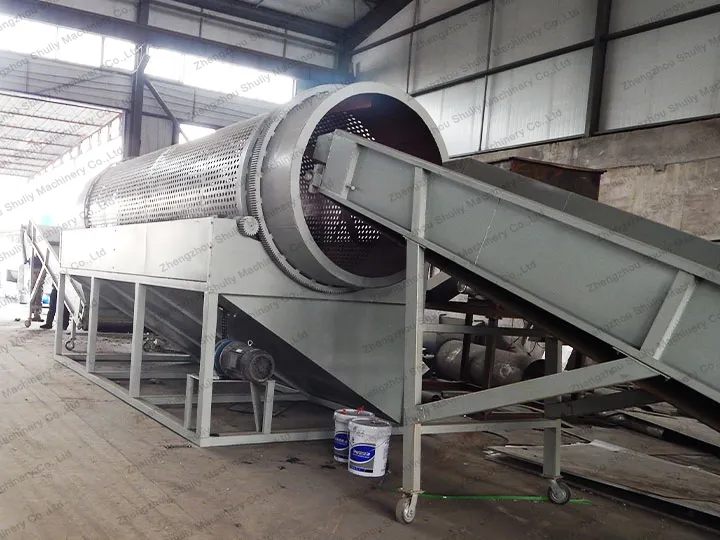
ट्रोममेल स्क्रीन का कार्य सिद्धांत
ट्रमेल सिलेंड्रिकल ड्रम पर आधारित होते हैं जिनकी सतह पर स्क्रीनिंग आवश्यकताओं के अनुसार विभिन्न आकार के छिद्र होते हैं। ड्रम को रोलर्स द्वारा समर्थित किया जाता है और इसे एक ड्राइव यूनिट द्वारा घुमाया जाता है, जिसकी धुरी आमतौर पर क्षैतिज से 3°-5° के कोण पर झुकी होती है, जिससे इनलेट अंत से आउटलेट अंत तक एक झुकी हुई लेआउट बनती है।
ट्रोमेल का कार्य सिद्धांत विभिन्न आकारों और घनत्वों की अशुद्धियों और सामग्रियों को अलग करने के लिए घूर्णन टम्बलर स्क्रीन के माध्यम से अपशिष्ट प्लास्टिक को स्क्रीन करना और अलग करना है। अपशिष्ट प्लास्टिक, विशेष रूप से बेकार प्लास्टिक की बोतलों जैसी सामग्री से निपटते समय, ट्रॉमेल लकड़ी के टुकड़ों और पत्थरों जैसी बड़ी अशुद्धियों को प्रभावी ढंग से अलग कर सकता है।
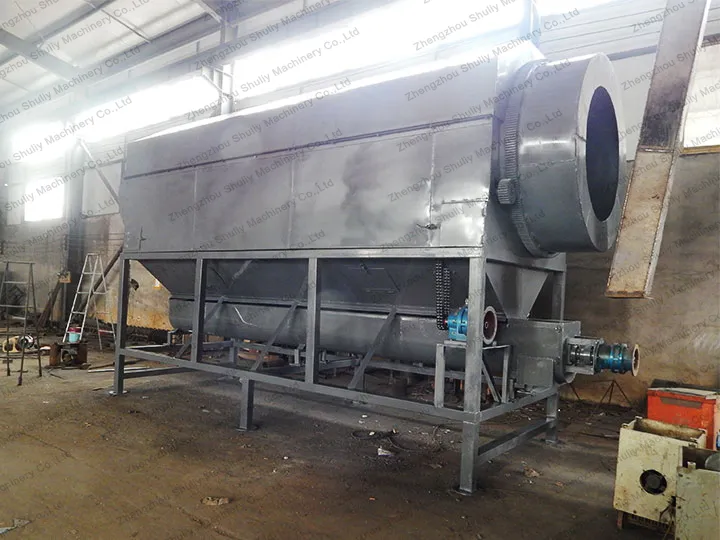
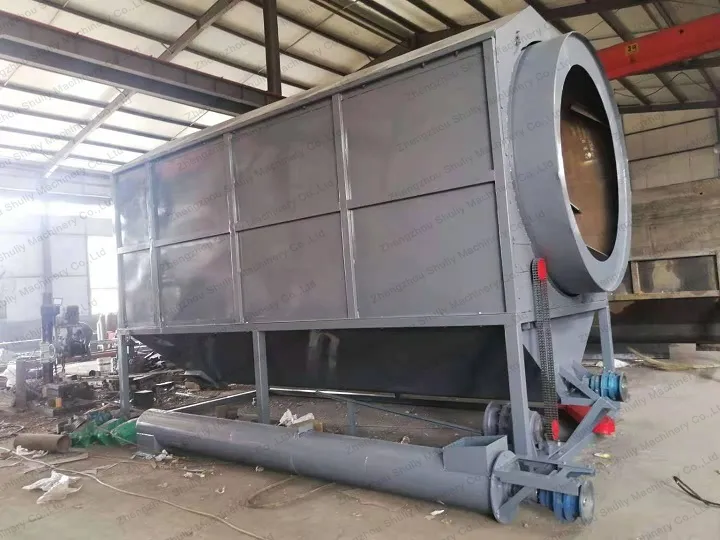
स्क्रीन टंबलर की पूरी प्रक्रिया
ट्रमेल ड्रम एक घूर्णनशील ड्रम और स्क्रीन के संयोजन के माध्यम से सामग्री वर्गीकरण को साकार करता है, और इसका कार्य प्रक्रिया निम्नलिखित मुख्य चरणों में विभाजित किया जा सकता है:
चरण 1–खुराक चरण:
स्क्रीन की जाने वाली सामग्री ड्रम के उच्च छोर से प्रवेश करती है और गुरुत्वाकर्षण और ड्रम की घूर्णन शक्ति के क्रियाकलाप के तहत आंतरिक दीवार के साथ आगे बढ़ती है।
चरण 2–स्क्रीनिंग प्रक्रिया:
सूक्ष्म कण स्क्रीन के छिद्रों के माध्यम से गिरते हैं और नीचे के संग्रह उपकरण द्वारा उठाए जाते हैं; बड़े कण ड्रम के साथ घूमते रहते हैं और अक्षीय दिशा में आगे बढ़ते हैं क्योंकि वे छिद्रों के माध्यम से नहीं गुजर सकते।
चरण 3–डिस्चार्ज चरण:
बड़े कण जो स्क्रीन के छिद्रों के माध्यम से नहीं गुजरते, अंततः ड्रम के निचले सिरे पर आउटलेट से बाहर निकलते हैं ताकि वर्गीकरण पूरा हो सके।
टम्बलर स्क्रीनिंग मशीन के मुख्य लाभ
- उच्च-प्रभावी निरंतर संचालन: ड्रम निरंतर घूमता है, जिससे 24 घंटे बिना रुके स्क्रीनिंग संभव होती है।
- कम रखरखाव लागत: सरल संरचना और कम पहनने वाले भागों के साथ, यह मरम्मत के लिए डाउनटाइम को कम करता है।
- मजबूत अनुकूलनशीलता: छलनी के छिद्रों का आकार आवश्यकताओं के अनुसार समायोजित किया जा सकता है, विभिन्न सामग्री के गुणों के अनुसार उपयुक्त।
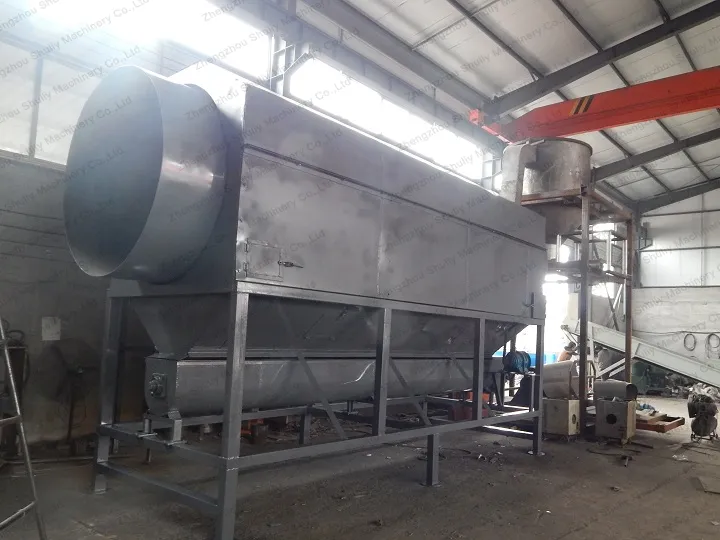
स्क्रीन टम्बलर के सामान्य प्रश्न
ट्रोमल ड्रम में कम स्क्रीनिंग दक्षता के सामान्य कारण क्या हैं?
सामान्य कारणों में छलनी के छिद्रों का अवरोध, ड्रम के घूर्णन की गति में असामान्यता, छलनी के छिद्र के आकार और सामग्री के कण के आकार के बीच असंगति, या ड्रम की बहुत छोटी झुकाव शामिल हैं, जिससे सामग्री के निवास समय की कमी होती है।
स्क्रीन टम्बलर में छानने के छिद्रों के अवरोध की समस्या को कैसे हल करें?
उपायों में शामिल हैं: ① घूर्णन के दौरान छानने के छिद्रों को साफ करने के लिए अंतर्निर्मित सर्पिल ब्लेड या ब्रश स्थापित करना; ② गीले सामग्रियों को पूर्व-सूखना; ③ एंटी-स्टिक कोटेड स्क्रीन का उपयोग करना; ④ नियमित रूप से स्क्रीन की सफाई के लिए रुकना, और यदि आवश्यक हो तो बुने हुए स्क्रीन को छिद्रित प्लेट स्क्रीन से बदलना।
टम्बल स्क्रीन की स्क्रीनिंग सटीकता को कैसे समायोजित करें?
समायोजन विधियों में शामिल हैं: ① विभिन्न आकार के स्क्रीन को बदलें; ② ड्रम की गति को समायोजित करें; ③ ड्रम के झुकाव के कोण को बदलें
पूछताछ
यदि आप हमारे उत्पादों में रुचि रखते हैं, अधिक जानकारी प्राप्त करना चाहते हैं, या नवीनतम समाचार समझना चाहते हैं, तो कृपया अपनी संपर्क जानकारी छोड़ें, और हम तुरंत आपसे संपर्क करेंगे। आपके समर्थन के लिए धन्यवाद!
